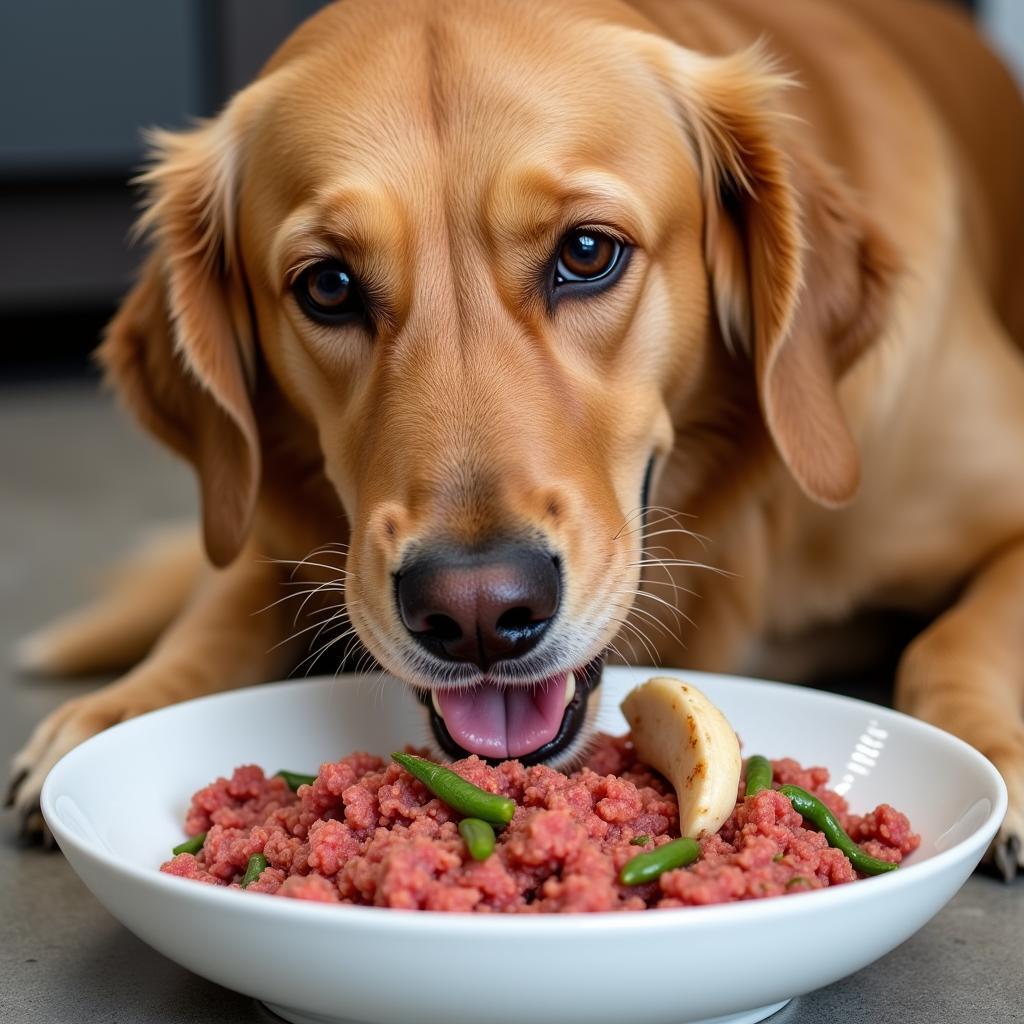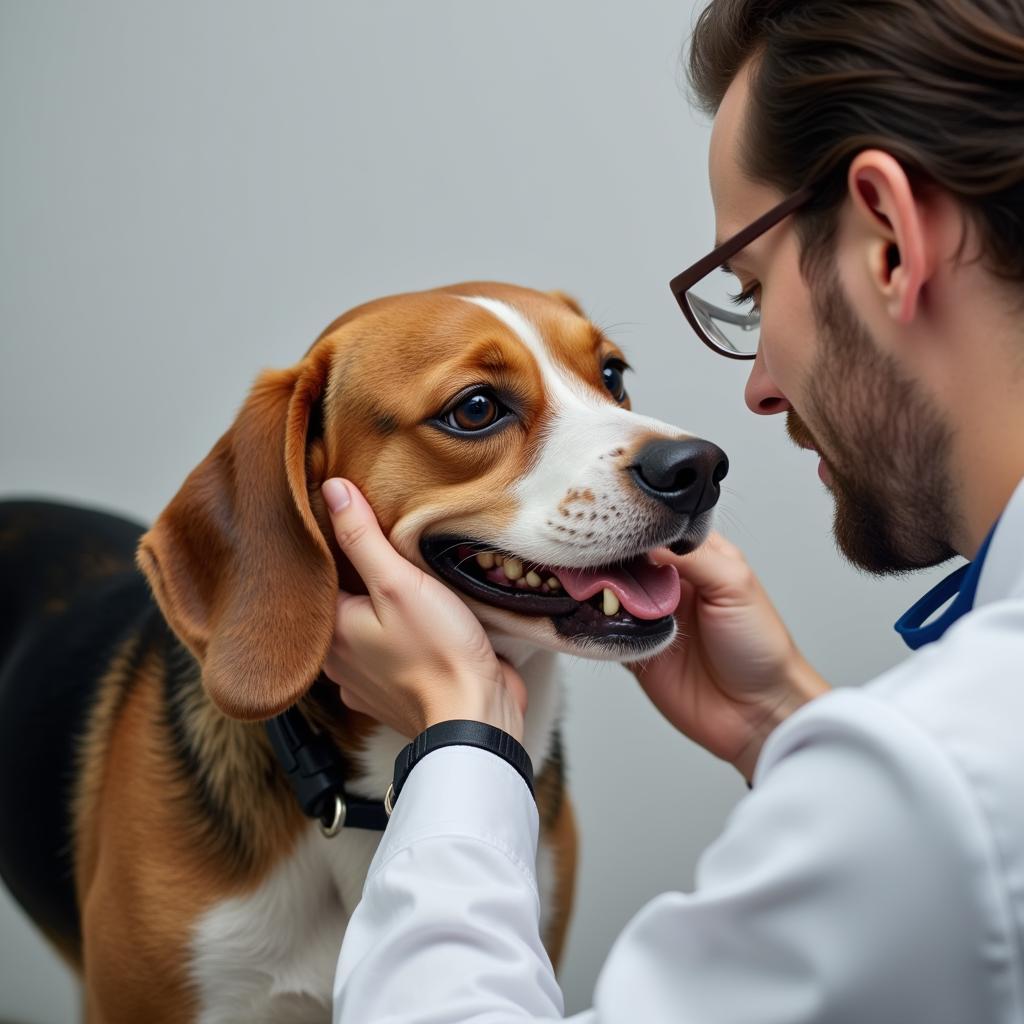Raw food diets for senior dogs are gaining popularity amongst pet owners seeking a more natural approach to their furry friend’s nutrition. A well-balanced raw diet can provide numerous benefits, but it’s crucial to understand the specific needs of an aging canine companion before making the switch. This guide will explore the key aspects of raw feeding for senior dogs, addressing common concerns and offering practical tips for success. After reading this, you’ll be equipped with the knowledge to make informed decisions about your senior dog’s diet and overall well-being. Check out our guide on the best dog food topper for additional options.
Understanding the Nutritional Needs of Senior Dogs
As dogs age, their metabolic rate slows down, and they may experience changes in their digestive system, immune function, and mobility. These physiological shifts directly influence their nutritional requirements. Senior dogs often require fewer calories than younger dogs to maintain a healthy weight, but they simultaneously need higher concentrations of specific nutrients, such as easily digestible proteins, healthy fats, and certain vitamins and minerals to support joint health and cognitive function.
Protein Power for Aging Pups
Protein is essential for maintaining muscle mass, which can naturally decline with age. Senior dogs benefit from high-quality, easily digestible protein sources, such as lean meats and fish. While raw feeding can be an excellent way to provide these crucial nutrients, ensuring the meat is fresh and sourced responsibly is vital.
Focusing on Essential Fatty Acids
Omega-3 and Omega-6 fatty acids play a vital role in supporting joint health, skin and coat condition, and cognitive function in senior dogs. These fatty acids can be incorporated into a raw food diet through the inclusion of fish oil, flaxseed oil, or other healthy fat sources.
 Senior Dog Enjoying a Raw Food Meal
Senior Dog Enjoying a Raw Food Meal
Transitioning Your Senior Dog to Raw Food
Switching your senior dog to a raw food diet should be a gradual process to minimize digestive upset. Begin by introducing small amounts of raw food alongside their current diet, gradually increasing the proportion of raw food over several weeks. Closely monitor your dog for any signs of digestive issues, such as vomiting or diarrhea, and adjust the transition speed accordingly. Need to find a local supplier? Look no further than our guide to local raw dog food.
Addressing Potential Concerns
Many pet owners have concerns about the safety of raw food diets, especially for senior dogs with potentially compromised immune systems. However, with proper handling and preparation, a raw food diet can be a safe and healthy option for older dogs. Choosing high-quality ingredients, storing food correctly, and maintaining proper hygiene are crucial for minimizing any potential risks.
Monitoring Your Senior Dog’s Health
Regular veterinary checkups are essential for all dogs, but especially for those on a raw food diet. Your veterinarian can help you monitor your senior dog’s health, assess their nutritional status, and make any necessary adjustments to their diet.
 Veterinarian Checking a Senior Dog
Veterinarian Checking a Senior Dog
Creating a Balanced Raw Food Diet for Your Senior Dog
A balanced raw food diet for a senior dog should consist of a variety of ingredients, including muscle meat, organ meat, bone, vegetables, and fruits. The precise ratio of these ingredients will vary depending on the individual dog’s needs and health conditions.
Sample Raw Food Meal Plan for a Senior Dog
A typical raw food meal might include ground beef, chicken liver, finely ground bone, chopped carrots, and a small amount of apple. You might also consider dog food topper powder as a supplement. Remember, this is just a sample meal plan; always consult with your veterinarian or a certified canine nutritionist to create a personalized diet plan for your senior dog.
Addressing Specific Health Conditions
Senior dogs with certain health conditions, such as kidney disease or pancreatitis, may require a modified raw food diet to accommodate their specific needs. For instance, dogs with kidney disease may need a lower phosphorus diet, while dogs with pancreatitis may benefit from a lower fat diet.
Conclusion: Nourishing Your Senior Dog with Raw Food
A raw food diet can be a healthy and nutritious option for senior dogs, providing them with the essential nutrients they need to thrive in their golden years. Remember to consult with your veterinarian or a certified canine nutritionist before transitioning your senior dog to a raw food diet, especially if they have any underlying health conditions. With careful planning, preparation, and monitoring, you can provide your aging companion with a diet that supports their health, vitality, and overall well-being. Consider Go! Solutions dog food and N&D Ocean dog food as additional options.
FAQ
- Is raw food safe for senior dogs?
With proper handling and preparation, raw food can be safe for senior dogs. - What are the benefits of Raw Food For Senior Dogs?
Raw food can offer improved digestion, increased energy levels, and healthier skin and coat. - How do I transition my senior dog to raw food?
Gradually introduce raw food alongside their current diet over several weeks. - What are the key ingredients in a balanced raw food diet?
Muscle meat, organ meat, bone, vegetables, and fruits. - Should I consult with my veterinarian before switching my senior dog to raw food?
Yes, always consult your veterinarian before making any significant dietary changes. - What are the potential risks of a raw food diet?
Potential risks include bacterial contamination if not handled properly. - How often should I feed my senior dog raw food?
Most senior dogs benefit from being fed twice a day.
Common Scenarios and Questions
-
Scenario: My senior dog is experiencing digestive upset after starting raw food.
-
Solution: Slow down the transition process and consult with your veterinarian.
-
Scenario: My senior dog is losing weight on a raw food diet.
-
Solution: Adjust the portion sizes or consider adding more calorie-dense ingredients to their meals.
-
Scenario: I’m concerned about the cost of raw food for my senior dog.
-
Solution: Explore budget-friendly options, such as buying in bulk or sourcing ingredients locally.
Further Resources
Explore other articles on our website for more information on senior dog care and nutrition.
Contact Us
For further assistance, please contact us: Phone: 02437655121, Email: [email protected] or visit our address: 3PGH+8R9, ĐT70A, thôn Trung, Bắc Từ Liêm, Hà Nội, Việt Nam. We have a 24/7 customer service team.